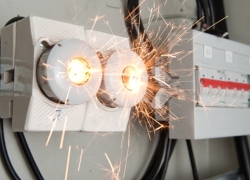Ensure business continuity with efficient monitoring
Ensure business continuity with efficient monitoring

The data center is a delicate environment. All the pieces to the puzzle must work together to provide the best computing power for colocation customers. In order for data center managers to keep an eye on every level of their facilities and ensure proper business continuity on all fronts, efficient monitoring is required.
The consequences of data center disruptions can be disastrous. When facilities go offline for even one minute, the loss can be catastrophic for a business. According to a study published in 2013 by the Ponemon Institute, the average cost of a data center outage is $7,900 for every minute the facility is offline, and that number increases all the time. Companies that experience this kind of disruption are hard-pressed to ensure continuity and may lose face in the eyes of their clients.
For instance, cloud-computing services provider Aliyun, the cloud division of Internet retail giant Alibaba, experienced an outage that lasted for 14 hours in late June of this year. According to Caixin Media, the company reported to some clients that the shutdown was due to a power outage, but to others that it was due to a severed Internet cable. Whatever the cause, this kind of outage could have a negative business impact for the cloud service provider's 1.4 million corporate customers - meaning Aliyun may lose clients as a result.
How can monitoring help ensure business continuity for data center operators? Here are a few ways:
1. Disaster recovery
When disruptions occur in the data center, it's a good idea to have an effective disaster recovery plan in place. Equipment and environmental monitoring can help managers develop a successful DR strategy that ensures the most server uptime and maintains business continuity in the event of a disaster. According to TechTarget contributor Paul Kirvan, the first step in any DR plan is to take a risk assessment of the facility, which takes into account many variables, including the operation of critical systems like air conditioning units and how much power servers are using. With the statistics and analysis provided by monitoring solutions, managers can make an accurate assessment and decrease their recovery time by being prepared for the right things.
2. Follow guidelines
Efficient monitoring also helps IT managers stay within industry-accepted guidelines, like those set forth by the American Society of Heating, Refrigeration and Air Conditioning Engineers. As of November 2014, the ASHRAE guidelines stated that data centers should stay between 59 degrees Fahrenheit and 89.6 degrees F in order to ensure minimal environmental impact. In addition to that, according to Data Center Journal, a server room's relative humidity should fall between 44 percent and 55 percent. These numbers mean nothing unless accurate measurements are being taken on the server room floor.
With proper environmental monitoring, managers can gauge the temperature and humidity and see where they need to invest in better cooling systems or where they can turn the thermostat up a notch. In this way, budgets can be impacted for the better, because if data centers are kept too cool, energy bills may be unnecessarily high.
3. Incident response
IT managers can have a better grasp on their facilities when companies invest in monitoring tools like those offered by Geist. By installing sensors near cooling equipment, power systems and the servers themselves, managers can more quickly detect and react to incidents that happen on the server room floor. For instance, if a power outage incident takes place like the one that occurred at the Hong Kong Aliyun facility, managers can be better prepared to act and get backups online.



